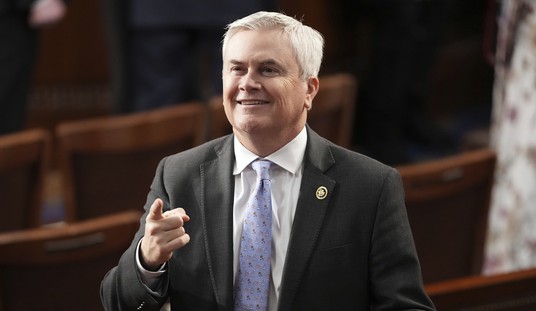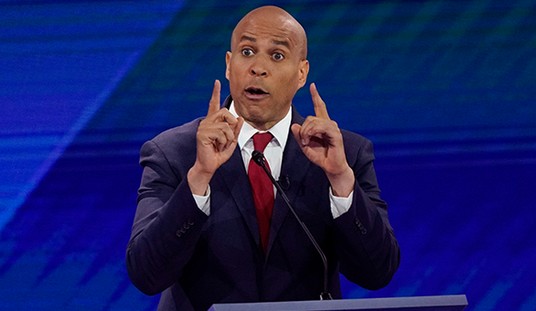Analyzing the six-page “Gang of Six” proposal for rewriting the federal budget is like measuring a bucket of water by holding the water in your hands.
Having said this, it looks like Coburn, Crapo, and Chambliss got their clocks cleaned.
TAXES
First, by crafting the tax increases in the Senate Finance Committee, the Gang of Six proposal allows Democrats (plus Olympia Snowe) to determine their parameters. And, incidentally, Democrats’ notions of how you “stimulate economic growth,” as the plan requires, are fundamentally different from ours.
Second, although creating flatter tax rates might have a “dynamic” impact which stimulates the economy and produces more revenue, there is no indication that this “dynamic” impact would initially be considered in determining whether the trillion dollars of revenue increases had been met, and it also would not be considered under the 1974 Budget Act.
Third, therefore, virtually all of the revenue increases in the proposal will come from massive “loophole closings” which will make the private jet issue look tiny in comparison.
Fourth, using a sunset of the Alternative Minimum Tax as a bargaining chip is a huge, huge mistake. EVERYONE agrees that the AMT can’t be allowed to go into effect. Therefore, by trading its abolition as a chit, you’re only unnecessarily offering up another $1.7 trillion of “loophole closings” which you need to find in order to offset it. And this is above and beyond any “loophole closings” necessary to achieve the $1 trillion and offset any loss from flattening rates.
Fifth, the plan adopts the liberal economic supposition that allowing people to keep their own money is a “tax expenditure.”
Sixth, the plan specifically envisions curtailment of popular deductions like the mortgage interest deduction and the charitable giving deduction.
Seventh, the plan specifically mandates the continuation of tax provisions liberals like, such as the Earned Income Tax Credit –- which, since it is “refundable” and goes to people who don’t pay taxes — is actually a spending program, rather than a tax cut.
DISCRETIONARY SPENDING CUTS
First, although the Gang of Six plan is an improvement over the phony cuts proposed by the Biden group, about $260,000,000,000 of the initial discretionary spending cuts would come from the military, if it is an across-the-board spending cap, as the drafters may envision.
Second, therefore, at most, only about $240,000,000,000 in cuts would come from discretionary domestic caps –- and it looks like this figure would include cuts through fiscal 2015, or only about $60 billion a year.
Third, this figure could be even lower if it includes both the reductions in actual spending and the reductions in interest due to the reductions in spending –- and even lower yet if it includes “chained CPI” and CLASS Act (see below).
Fourth, some of the spending “cuts” which are being considered include $60 billion for hiring additional federal employees, supposedly to ferret out “waste, fraud, & abuse.” If there are many more “cuts” like this, you have blown through the $240 billion without really cutting domestic spending.
Fifth, the proposal to recalculate the Consumer Price Index (the “chained CPI” proposal) isn’t just a spending cut, as it is billed. It’s also a big tax increase, because deductions, exemptions, etc., would rise a lot more slowly.
Sixth, although I am not a fan of ObamaCare, I think it is a HUGE mistake to repeal its foolish and unpopular, but peripheral, aspects piece-by-piece, thereby making it harder to repeal in its totality. Therefore, I don’t think they’re doing us a real favor by repealing the CLASS Act. If any part of this very-out-year program is being counted against the $500 billion, then this makes that figure even more pitiful.
Seventh, it is constitutionally impossible to impose a “statutory” cap on discretionary spending in out-years, as the proposal envisions. These are illusory.
Eighth, therefore, the Gang of Six would have to rely on Gramm-Rudman-type rules changes. I worked under Gramm-Rudman, and Crapo, Coburn, and Chambliss did not. And I can say that, in case of significant spending programs, the budget will be busted by 60 votes.
Ninth, there are a lot of tricks for getting around process reform, including, for instance, approving the unpopular programs first, and then busting the budget with 60 votes in order to continue the popular ones.
Tenth, therefore, you’re trading $2.7 trillion of tax increases (if you consider the AMT a “given” and even if you don’t have to offset rate-flattening) for less than $60 billion a year in domestic discretionary cuts -– and they could be phony cuts. That’s $45 of tax increases for every one dollar of spending cuts.
THE TEN-YEAR PLAN/ENTITLEMENTS
First, the thrust of this plan is that the Democratic committees would come up with roughly $743 billion in long-term savings. We saw, with ObamaCare, how easy it is to concoct this magnitude of fraudulent “cuts.”
Second, $500 billion of this amount (over two-thirds) would come from “fixing” the unfixable “doc fix” and from “additional … health savings” –- which would “maintain the essential health care services that the poor and elderly rely on.” We went through exactly this same fraud scheme from this same committee dealing with these same issues less than two years ago. Does anyone think the fraudulent ObamaCare “cuts” give us any reason to give Senate Finance another blank check?
Third, another $145 billion of the remaining $243 billion (after health “cuts”) would come from defense and anti-terrorism, and $11 billion would come from farm subsidies. This leaves only $70 billion in “cuts” from the bloated Departments of Health and Human Services, Housing and Urban Development, and so forth. And it’s not even clear whether there would be any enforcement mechanism to implement these, given that they’re not necessarily “entitlement cuts” or “across-the-board cuts” which would trigger Budget Committee action (see below).
Fourth, the proposal mandates that the Judiciary Committee come up with “an unspecified amount [of cuts] through medical malpractice reform.” Anyone who expects Chairman Pat Leahy to slap the trial lawyers needs to have his head examined. In a comparable exercise with respect to ObamaCare, what we got was funds to study the issue –- channeled to the liberal states which had not enacted tort reform.
PROCESS
First, the Budget Committee is mandated by the Gang of Six proposal to “ensure Congressional action to reduce the deficit if the debt-to-GDP ratio after 2015 has not stabilized.” But the mandate does not specify how balance would be achieved, and may well be a giant non-filibusterable unamendable tax increase (see below).
Second, the one thing we know about the budget process, as it currently operates, is that it was the engine behind the passage of ObamaCare and has also been the mechanism for large numbers of tax increases, without having any significant impact on reducing spending.
Third, the Budget Committee is mandated by the proposal to review long-term “federal health care spending.” Does anyone want to hear more on “health care spending” from the committee that gave us the reconciliation instructions on ObamaCare -– and which assumed ObamaCare would make premiums go down?
Fourth, the Budget Committee is mandated to “achieve program integrity savings of $26 billion in entitlement programs to curb fraud, abuse, and other wasteful spending government-wide.” This sounds a lot like the $60 billion proposal to “cut waste, fraud, & abuse” by hiring a lot more federal employees.
Fifth, there seems to be a complete exemption from budget processes for “across the board cuts for those most in need.”
Sixth, there is potentially “expedited consideration” (i.e., no filibuster) for legislation responding to a “committee [that completely] fails to report entitlement program savings” or a committee which fails to “impose across the board cuts.” First of all, it’s not clear that, with the exception of the health/”doc fix” debacle and the “waste, fraud, & abuse” issue, that any committee is required to make either entitlement cuts or across-the-board cuts. To the contrary, it appears that across-the-board cuts affecting poverty programs are outlawed.
Seventh, but, assuming the Budget Committee is required to report possibly unfilibusterable, possibly unamendable legislation, what limits are there to what can be included in it (e.g., tax increases)?
Eighth –- and this is where the filibusterability and amendability come in — McConnell and Reid would be authorized to limit debate and amendments in any way they chose. Conservatives should be outraged at any proposal which would give McConnell the ability to silence Jim DeMint and Rand Paul.
Ninth, Social Security reform need not be considered and CANNOT be considered until the larger Reid/McConnell potentially unfilibusterable and unamendable bill moves. If the Finance Committee sits on reform, even if larger deficit reduction reaches the Senate floor, the ONLY way it can move is if five senators from each party to come up with a proposal that solves every Social Security problem for 75 years.
by Michael E. Hammond, former General Counsel Senate Steering Committee 1978-89.













Join the conversation as a VIP Member